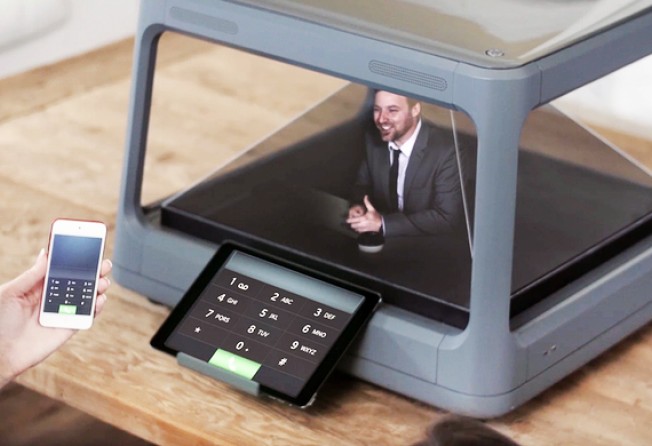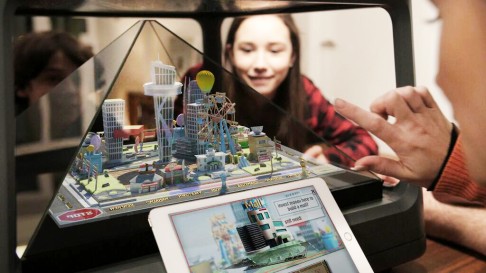Canadian-Chinese start-up bringing holographic technology 'closer to Star Wars'

A start-up from Vancouver, Canada plans to bring Star Wars-style holograms to people’s living rooms and “take gaming to the next level” with a new tabletop device it is working on. The device will be used for gaming and educational purposes.
H+ Technology has raised C$254,873 (US$206,670) through crowdfunding website Kickstarter to develop Holus, which projects images into a glass pyramid about the size of a games console. This far exceeds the company's original target of C$50,000.
Holus is due to go into production in July 2016 and will retail at an unspecified date for C$850, or C$950 for the upgraded Holus Pro, which includes a developer’s kit. The devices will be made available to Kickstarter backers at a C$300 discount once the crowdfunding is complete, the company said.
WATCH: A video produced by H+ Technology explains how Holus could be used in the future
“We all take inspiration from sci-fi movies such as Star Wars, and recent ones such as Iron Man. They all portray the future in terms of the next information medium,” said Dhruv Adhia, the company’s chief technical officer.
“Holus is a first step in that direction.”
The company was started in a basement in 2012 by three graduates of a 12-month Master’s programme at Vancouver’s Centre for Digital Media.
Vincent Yang, the company’s chief executive, and Yamin Li, its CFO, both hail from China.
The company is now working with Chinese manufacturers to reduce its future production costs.
“Holus is ideal for games. In fact, our purpose is to take gaming to the next level,” Adhia said.
“Digitised board games, multiplayer games, collaborative and combative games are all ideal for Holus.”
Working with a smartphone or computer, the device lets users play games that appear in the pyramid in the form of 3-D holograms.
It also has educational applications, such as being able to display the structure of DNA in three dimensions, Adhia said.
Players can interact with Holus using their voices, hand and body movements, or smartphones, depending on the application.
Meanwhile, Microsoft is developing holographic goggles and a see-though computer called HoloLens that will let gamers use physical gestures and speech to interact with titles like Minecraft.
Designers will also be able to view their creations in the form of holographic images, Microsoft said.
